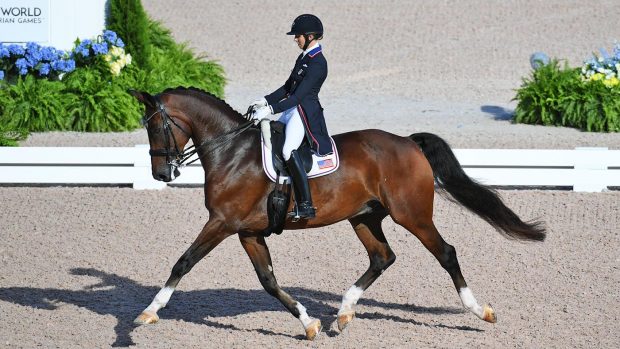Expert advice on choosing mares, stallions or geldings in the battle of the sexes
Stallions
Disadvantages: Stallions need expert handling and careful consideration given to their environment, such as good, solid fencing. If your stallion escapes from his field and serves a mare, you will be liable for the consequences, from the mare being in foal to damaged property.
Stallions are more likely than mares or geldings to use their teeth when disagreements arise.
A stallion is motivated to nip or bite by anger or annoyance borne out of either frustration from living in an unnatural environment or ‘playful’ behaviour caused by bad manners or a lack of mental stimulation. It’s up to you to remedy the root cause rather than having to deal with the (often painful) end result.
It is especially important that stallions are taught the bounds of acceptable behaviour early on in their lives.
If you plan to compete your horse as an entire, bear in mind he might find the presence of mares distracting, which could affect his performance.
Dressage rider and FBHS, Adam Kemp, says that, given the choice, he would be tempted to geld a stallion.
“Management-wise, stallions aren’t easy,” says Adam. “In my case, it would be a logistic nightmare trying to plan a stallion around 15 other horses on the yard, including mares, which I like to turn out.
“On the down side, stallions can be arrogant, awkward, willful and take longer to train because their concentration is more easily affected.
“Stallions are used to being the head of a herd and as a dressage rider, you need to be the leader. Not all stallions accept this.”
Advantages: Once a stallion decides to work with you rather than against you, it’s possible to build up a real rapport and receive loyal service in return.
“Stallions can be fantastic to ride,” says Adam. “And it’s possible to get a real buzz out of them. They can be really good at getting you out of trouble – providing they’ve decided to fight for you.”
Adam adds that if you pay attention to safety and have the right facilities and the time needed to devote to a stallion, it’s possible to achieve a very satisfying partnership with your entire horse.
From a breeding perspective, there’s also a good chance that some or all of a stallion’s positive attributes (good conformation, kind temperament or competition potential) will be inherited by his offspring.
Geldings
Disadvantages: Whether he’s talented at a certain discipline or a good example of a particular breed, it won’t be possible to pass a gelding’s genes on.
Advantages: They’re not hormonal and are generally less complicated. Adam believes that if you have a gelding with the right character and temperament, he’ll be more dependable and reliable than astallion, and therefore easier to train and manage.
“I find geldings are better movers because they’re not hindered behind and are more comfortable in the hindleg,” he says.
“If a gelding is difficult, it’s because of his temperament, not the fact that he’s a gelding. Imagine how bad the same horse would be if he was a stallion!”
Mares
Disadvantages: While some mares’ temperaments remain constant whether they are in season or not, others suffer greatly from the change in hormones.
A moody mare can be a real headache, especially if you want to compete. Mood swings might render some mares less able to concentrate and more unreliable than geldings.
Their performance in the ring could be affected by as much as eight or nine per cent when they are in season.
Advantages: The main plus point is if you want to breed from your mare. “I’d never be opposed to buying a mare,” says Adam, who firmly believes it’s possible to build up a special partnership with a mare.
“There are so few really talented horses in this world that you can’t turn one down on the grounds of its sex.”



